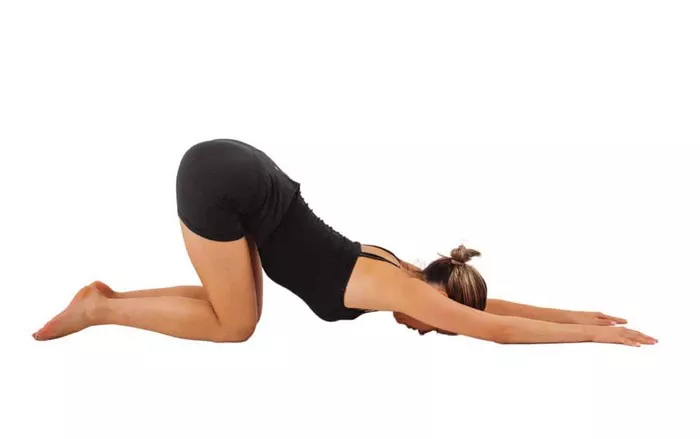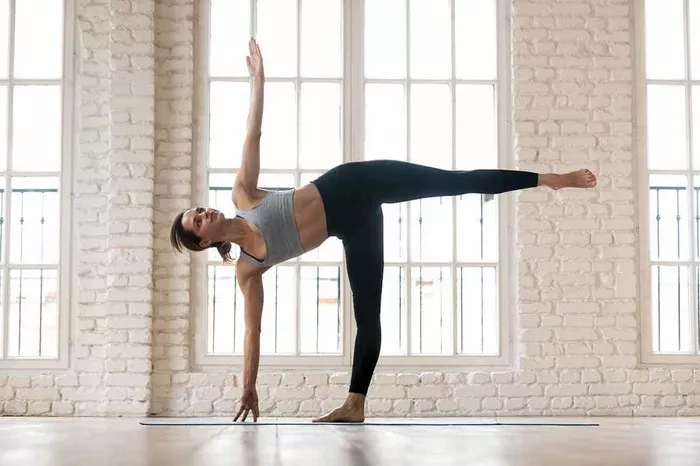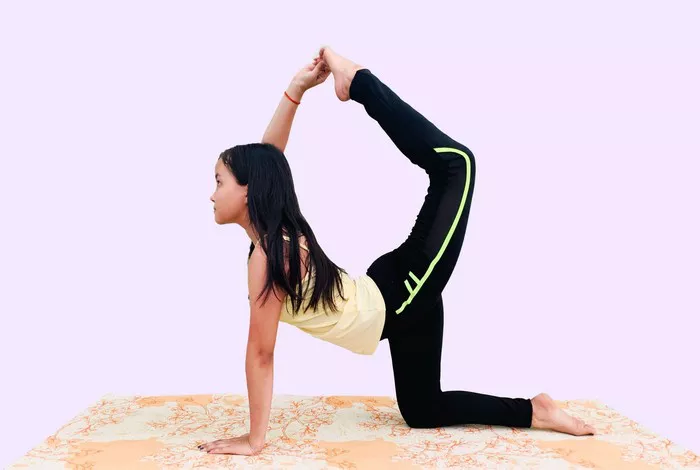Kriya Yoga is a profound and transformative system of yoga that seeks to accelerate the practitioner’s journey toward self-realization and enlightenment. Derived from ancient yogic traditions, Kriya Yoga is a holistic practice that integrates the physical, mental, and spiritual aspects of the individual. The term “Kriya” translates to “action” or “technique,” while “Yoga” means union or integration. Hence, Kriya Yoga refers to the set of practices that lead to union through disciplined action.
This article will delve into the different types of Kriya Yoga, their benefits, and how they help practitioners achieve higher levels of consciousness and self-mastery.
Introduction to Kriya Yoga
Kriya Yoga is a comprehensive system of yoga practices aimed at purifying the body and mind. It combines specific breathing techniques (pranayama), meditation practices, and physical postures (asanas) to balance and harmonize the mind, body, and spirit. Unlike other forms of yoga, Kriya Yoga places significant emphasis on breath control and meditation to facilitate a deep connection with the inner self.
The primary goal of Kriya Yoga is to bring the practitioner to a heightened state of awareness, clarity, and inner peace. The practice helps one transcend the distractions of the external world, leading to a state of stillness and mindfulness. Additionally, Kriya Yoga has a therapeutic effect on both the body and the mind, promoting overall health, mental clarity, and spiritual growth.
The Three Main Components of Kriya Yoga
Before exploring the different types of Kriya Yoga, it is essential to understand the fundamental components that make up the practice. These components form the foundation for all Kriya Yoga techniques:
Pranayama (Breath Control): Pranayama is the practice of controlling the breath to regulate the flow of prana (life energy) within the body. Through specific breathing techniques, practitioners can awaken dormant energy, enhance concentration, and achieve mental stillness. Pranayama plays a pivotal role in Kriya Yoga and is a primary tool for achieving spiritual progress.
Dhyana (Meditation): Meditation is a core element of Kriya Yoga that helps practitioners focus their minds, calm their thoughts, and experience deep inner peace. In meditation, one directs their attention inward, often using a mantra or visualizing energy flow, with the intention of realizing the higher aspects of consciousness.
Asanas (Postures): While not the primary focus of Kriya Yoga, physical postures play a supportive role in helping prepare the body for the more subtle practices of pranayama and meditation. Asanas help to release physical tension, improve flexibility, and create a stable and comfortable base for seated meditation.
The Different Types of Kriya Yoga
Kriya Yoga is not a one-size-fits-all practice; it encompasses a wide range of techniques that cater to various spiritual needs and personal goals. These practices vary in their emphasis on breath control, meditation, and physical postures. Below are some of the most widely recognized types of Kriya Yoga:
Pranayama-Based Kriya Yoga
Pranayama-based Kriya Yoga is primarily focused on the practice of breath control to elevate consciousness. Breath is considered to be the bridge between the body and the mind. By regulating the breath, practitioners can regulate the flow of prana and experience a higher state of awareness.
Some well-known pranayama-based techniques used in Kriya Yoga include:
Kapalbhati: This is a forceful breathing technique where the practitioner exhales forcefully and inhales passively. It is designed to clear the mind, energize the body, and detoxify the system. Regular practice of Kapalbhati helps to increase mental clarity and reduce stress.
Anulom Vilom (Alternate Nostril Breathing): In this technique, practitioners inhale through one nostril, hold the breath, and then exhale through the other nostril, alternating between the two. Anulom Vilom helps balance the body’s energy system, calm the nervous system, and enhance focus.
Bhastrika (Bellows Breath): Bhastrika is a rapid and forceful form of breathing that increases energy levels and clears the mind. It is known for its ability to stimulate the body and mind, making it an excellent practice for preparing for more advanced meditation.
Ujjayi (Victorious Breath): In Ujjayi pranayama, the practitioner creates a gentle sound by narrowing the throat during inhalation and exhalation. This technique is used to calm the mind and promote focus during meditation or yoga asana practice.
Meditation-Based Kriya Yoga
Meditation-based Kriya Yoga emphasizes techniques that deepen the meditator’s connection to the self and the divine. Through focused concentration and deep contemplation, the practitioner seeks to transcend the ego and experience direct communion with their higher consciousness.
Key meditation-based Kriya Yoga techniques include:
Kriya Pranayama (The Kriya Breath): This is the cornerstone of many Kriya Yoga systems. It involves a series of controlled breathing techniques that regulate the flow of prana through the body and calm the mind. The practice of Kriya Pranayama leads to greater spiritual awareness and mental clarity.
Dhyana Yoga (Meditative Yoga): This is a meditation-focused practice in which the practitioner sits in a comfortable posture, focuses on the breath, and clears the mind of distractions. The aim is to enter a deep state of meditation, where one can experience the transcendental nature of the self.
Mantra Meditation: In this practice, the practitioner repeats a specific mantra (a sacred sound or word) to help calm the mind and focus inward. Mantra meditation can create a powerful energetic vibration that helps dissolve mental blockages and distractions.
Kundalini Awakening: Some Kriya Yoga practitioners engage in specific meditation practices designed to awaken the dormant spiritual energy (Kundalini) at the base of the spine. Through techniques such as breath control, visualization, and chanting, practitioners aim to raise the Kundalini energy up the spinal column, leading to spiritual enlightenment.
Asana-Based Kriya Yoga
While not as widely recognized as pranayama and meditation, asana-based Kriya Yoga focuses on the practice of physical postures to purify the body and facilitate the flow of prana. Asanas help release physical tension and prepare the practitioner for deeper meditation and pranayama.
Some asana-based Kriya Yoga practices include:
Hatha Yoga: Hatha Yoga is often considered a preparatory practice for meditation and pranayama. It involves a series of physical postures that work to purify the body and balance energy. The practice of Hatha Yoga helps strengthen the body, improve flexibility, and increase mental focus.
Kriya Asanas: These are specific postures used in Kriya Yoga that combine elements of traditional yoga with dynamic breathing patterns. These postures aim to open up the energy channels in the body and facilitate the flow of prana, allowing the practitioner to experience heightened states of awareness.
Dynamic Kriyas: These practices involve dynamic movements and sequences designed to stimulate energy flow in the body. Through these physical exercises, practitioners prepare the body and mind for the more subtle practices of meditation and pranayama.
Kriya Yoga for Self-Realization
At its core, Kriya Yoga is a spiritual discipline aimed at self-realization, or the experience of oneness with the Divine. It is not solely about physical fitness or mental relaxation; rather, it is a path toward the ultimate goal of liberation (moksha).
The practices of Kriya Yoga help to silence the restless mind, dissolve the ego, and awaken the practitioner’s innate spiritual potential. Through dedicated practice, individuals begin to perceive the underlying unity of all creation and develop a deep sense of inner peace and self-awareness.
Some practices that support self-realization include:
Pranayama and Meditation: As previously mentioned, pranayama and meditation are fundamental to Kriya Yoga. These practices help clear the mind of distractions, allowing the practitioner to experience the deeper states of consciousness that lead to self-realization.
Self-Inquiry (Atma Vichara): This involves asking oneself the fundamental question, “Who am I?” Through this inquiry, the practitioner seeks to peel away the layers of the ego and discover the true nature of the self.
Surrender (Ishvara Pranidhana): Surrendering to the Divine is an essential aspect of Kriya Yoga. By surrendering the ego and aligning oneself with the flow of divine energy, the practitioner experiences profound spiritual awakening and inner peace.
The Benefits of Kriya Yoga
The practice of Kriya Yoga offers numerous benefits for the body, mind, and spirit. Some of the most notable benefits include:
Mental Clarity: Regular practice of Kriya Yoga helps clear the mind, reduce stress, and enhance focus. By calming the nervous system and balancing the energy within the body, practitioners can achieve mental clarity and improved cognitive function.
Emotional Stability: Kriya Yoga fosters emotional balance by helping practitioners release negative emotions, such as anger, fear, and anxiety. The techniques of breath control and meditation promote emotional stability and a sense of inner peace.
Spiritual Growth: The ultimate goal of Kriya Yoga is spiritual enlightenment. Through consistent practice, practitioners experience a deeper connection to their higher selves and develop a sense of oneness with the universe.
Physical Health: Kriya Yoga improves overall physical health by promoting better circulation, boosting immunity, and enhancing flexibility. The practice of asanas and pranayama helps to detoxify the body and keep it in a state of optimal health.
Inner Peace: Perhaps the most profound benefit of Kriya Yoga is the sense of inner peace that comes from regular practice. Through meditation and self-awareness, practitioners cultivate a deep sense of stillness and calm, regardless of external circumstances.
Conclusion
Kriya Yoga is a multifaceted practice that offers a holistic approach to physical, mental, and spiritual well-being. With its emphasis on breath control, meditation, and asanas, Kriya Yoga serves as a powerful tool for self-realization and enlightenment. Through the various types of Kriya Yoga, practitioners can choose the path that best suits their personal needs and spiritual goals.
Whether you are seeking mental clarity, emotional stability, physical health, or spiritual awakening, Kriya Yoga offers transformative practices that guide you toward the realization of your highest potential. By committing to regular practice, you can unlock the deep well of wisdom and energy that lies within, leading to a life of peace, purpose, and fulfillment.
Related Topics:

















